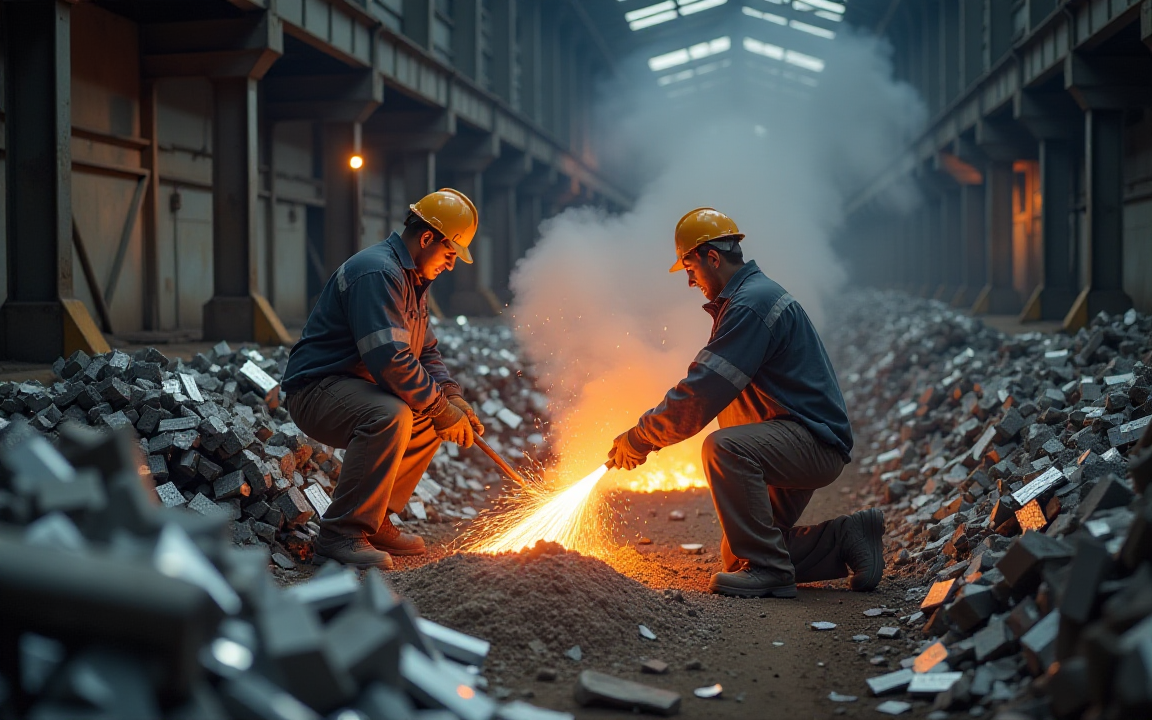Aluminum prices are facing downward pressure as rising LME inventories and ongoing uncertainty surrounding the impact of US tariff increases combine to dampen the market.
“In addition to uncertainty about the impact of the US tariff increase in June, the 150,000-ton (approx. 40%) rise in LME inventories since the end of June is likely to be dampening aluminum prices,” Barbara Lambrecht, commodity analyst at Commerzbank AG, said in a report.
In addition, China maintained its position as the world’s leading producer of aluminum, demonstrating significant growth in the first seven months of the year.
Primary aluminum production in the country surpassed the previous year’s figures by a notable 2.8%, indicating a sustained high level of output.
China production
This continued robust production from China, the most critical producing nation globally, has a substantial impact on the international aluminum market, influencing supply dynamics and global pricing trends.
The consistent growth in Chinese aluminum output underscores the country’s dominant role in the industry and its capacity to meet, or potentially exceed, global demand.
Lambrecht added:
However, China’s largest aluminum producer has now dampened expectations for further production growth in its reporting: only limited capacity growth is expected worldwide.
At the same time, the market for aluminum ingots is currently facing a significant imbalance.
Domestically and globally, inventories of aluminum ingots are constrained. This scarcity is exacerbated by strong demand, particularly from the rapidly expanding renewable energy sector.
The construction of solar panels, wind turbines, and other green infrastructure relies heavily on aluminum, leading to robust and sustained demand that outstrips available supply.
Tariffs
US tariffs are negatively impacting European secondary aluminum producers. This is due to American producers paying significantly more for aluminum scrap, which in turn drives up prices.
A scrap shortage is leading to plant closures, prompting the EU to consider emergency measures, according to reports. These measures, potentially including a tariff on scrap exports, are expected to be unveiled in September.
Meanwhile, US tariffs are affecting various sectors, notably shifting trade flows for one of the world’s largest aluminum producers, which operates five smelters in Canada.
Because of the tariffs, the company has significantly reduced its deliveries of Canadian-produced aluminum to the US and is now purchasing ingots directly from the American market.
Lambrecht said:
Thus, US tariffs are boosting demand for domestically produced aluminum as desired.
However, US production is unlikely to meet consumption, necessitating continued metal imports at higher costs, she said.
Premiums for physically delivered aluminum in the US are currently at an exceptionally high level.
Plan to reduce China steel industry overcapacity
Official documents have revealed China’s plan to decrease steel production in both 2025 and 2026, according to media reports.
To curb overproduction and modernise the industry, new capacity will be strictly limited.
Simultaneously, older, less efficient blast furnaces, which contribute to higher emissions and operational costs, are slated for closure.
This strategic initiative aims to streamline production, improve environmental performance, and ensure the long-term sustainability of the sector.
Figures were, however, not specified.
Lambrecht added:
Nevertheless, the price of iron ore rose yesterday as a leading raw materials service provider reported good demand data at the same time.
The post Aluminum market pressured by rising inventories, US tariffs and China’s output appeared first on Invezz

